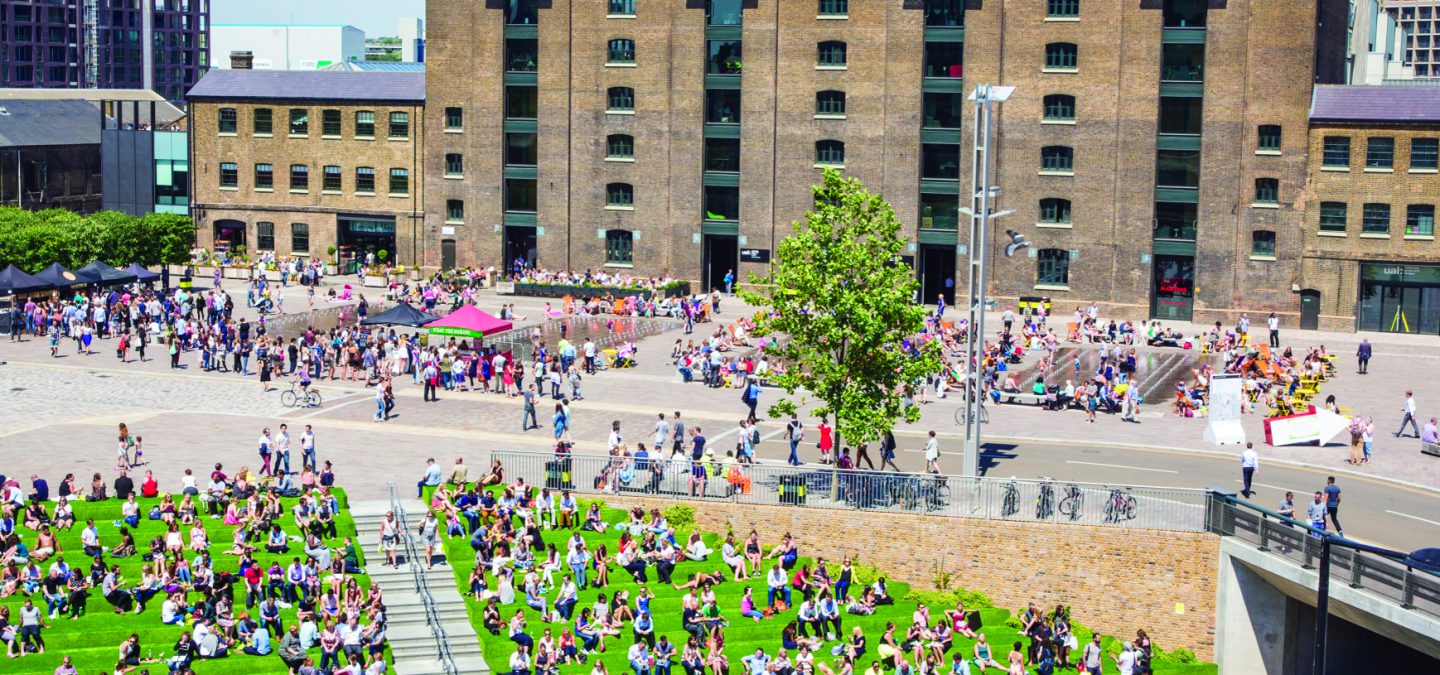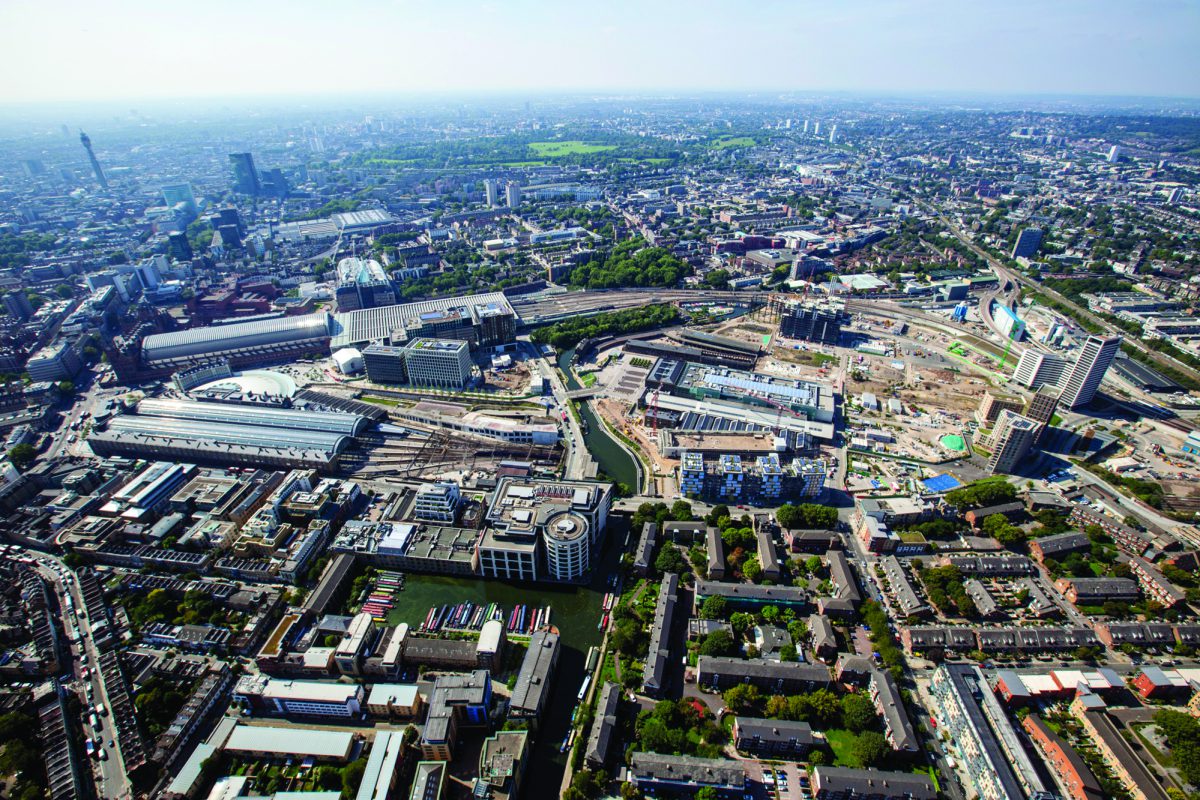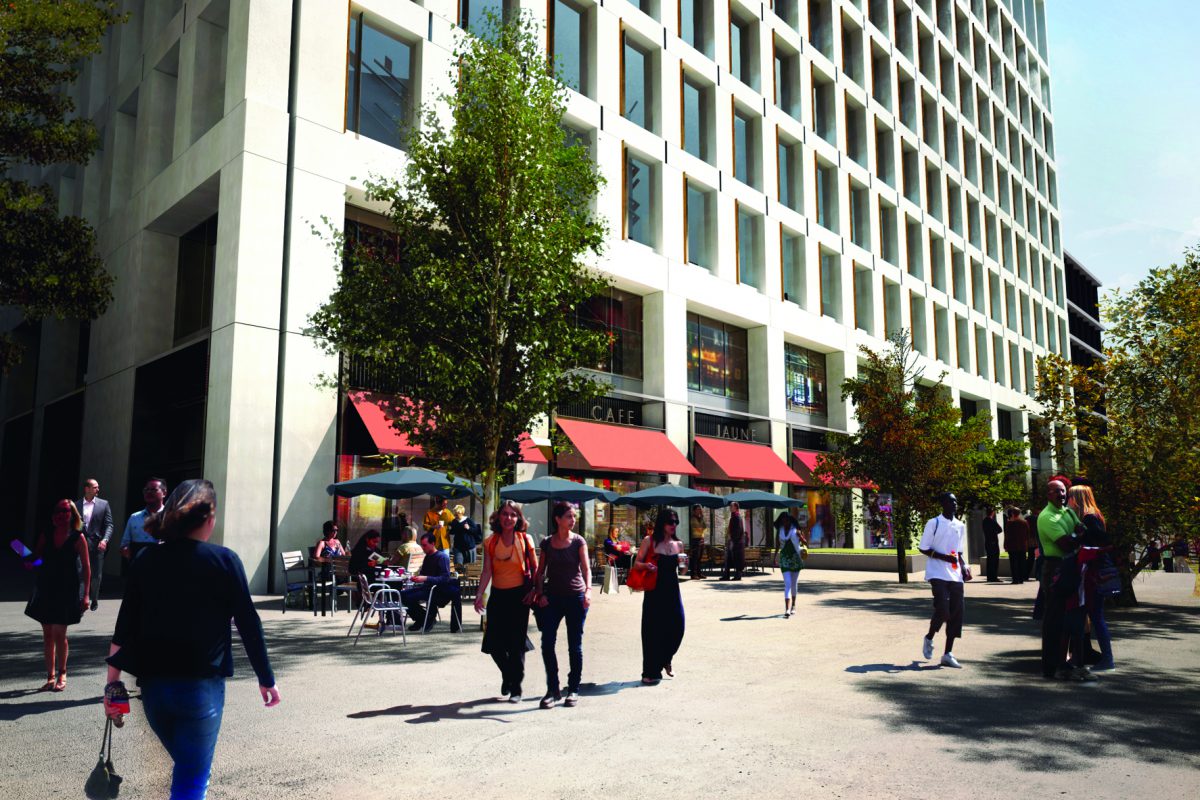
Keep up with our latest news and projects!

In 2010 our research team examined all four major office areas in the Netherlands. The results showed that the combined vacancy in mixed-use areas (11.1%) is considerably lower than in single-use office locations (20.7%). We further analysed the submarkets and buildings in Amsterdam with the highest vacancy and identified four factors that relate most to vacancy rate. While distance to a major train station, distance to the city centre, and the perceived safety of the office areas were important, mixed-use turned out to be the number one deciding factor. Creating a lively public space by adding retail, restaurants, bars and other functions to the plinths of office buildings does seem to pay off.
Drugs, prostitutes and urban decay were a common part of London’s King’s Cross in the 90’s. No one really wanted to work and live near the area, or even walk through it and its terrible perception made it difficult to imagine any way to change this. While early plans for redevelopment fell through, the 1996 decision to move the Channel Tunnel Rail Link from Waterloo to St Pancras became the catalyst for change. The landowners decided to develop the land and in 2001 Argent was selected as the development partner.
In all phases of the project the developer worked closely with the formal authorities, but also with local community groups, through the King’s Cross Development Forum. From the outset, the vision was to create a high-density part of London where people could live and work. The scheme totals around 750,000 m2, where offices account for 56% and includes 22 office buildings, 17 residential buildings, 45,000 m2 of retail space, a hotel and the University of the Arts London.
In 2011 the first parts of the development opened to the public, among them the university at the Granary Complex. Since then, restaurants have opened, schools have been established and the first residents and office tenants have moved in. Granary Square has become a popular destination and regularly hosts festivals and events, while the introduction of the Eurostar terminal and the redevelopment of St Pancras International and King’s Cross train stations have contributed significantly to the transformation of the area.
King’s Cross was never desirable as a business location; top rents averaged around €250 per m2 per year. Currently, rents over €800 per m2 per year are achievable. Office tenants include top brands like Google, Louis Vuitton, BNP Paribas Real Estate, Camden Council and Vista Print. The fact that these top companies want to locate here indicates the value of mixed use office locations.
 Aerial photo of King's Cross
Aerial photo of King's Cross

While combining different uses within an area does not pose challenges, per se, for developers and investors, bringing different functions together within one building does add elements of complexity and risk. Developers and investors perceive that mixing uses makes their job more difficult and leads to a decline in their investment. Primary perceived risks for the mix of uses in a single building include:
Although a number of perceived risks are involved in developing mixed-use buildings, the number of examples of successful and well-functioning mixed-use areas (compared to single-use areas) is increasing. This trend indicates that the outcome may compensate for the additional ‘risk’.
Successful projects have the following elements in common: they are locations within the existing urban fabric, they are brown-field developments, they are mixed-use schemes and they offer excellent public transport. In a truly mixed area residential must be included; only then there is the potential for a 24-hour place with live, work, and play happening all together.
London may be an outlier, where money and people are pouring in like no other city in Europe. But it is just one of many new development schemes all over Western-Europe. Similar to Amsterdam’s South Axis and London’s King’s Cross, a number of other mixed-use (re)developments are underway. For example, the Europa Viertel in Frankfurt, Paddington (Sheldon Square) in London, HafenCity in Hamburg, and Hellinikon (Old Athens airport) redevelopment in Athens. Since these are long-term projects, their success may be challenged by time and market cycles, although Canary Wharf (London) and Potzdamerplatz (Berlin) have shown otherwise.
 Retail units at Two Pancras Square - © King's Cross Central Genaral Partner Limited (via www.kingscross.co.uk)
Retail units at Two Pancras Square - © King's Cross Central Genaral Partner Limited (via www.kingscross.co.uk)
Interested? Join The City At Eye Level and share your story!
Discover moreCompanies located in office buildings that offer a vibrant public space with retail, restaurants, bars and other amenities in the plinths, plus residential and hotel functions and in close proximity to public transport, are simply suiting the demands of their employees. Being located in a hotspot is thus one way to hire and retain personnel and can therefore be regarded as one of the most important ‘fringe benefits’ for employees.
Creating mixed-use environments is not only a favour to workers, but also to the city itself. It is the organic mix and density of cities that has produced vibrant and attractive areas in our cities throughout centuries. It only makes sense to continue to offer environments where people can work, live and enjoy their leisure time. With people, companies and employees, also comes commercial value.